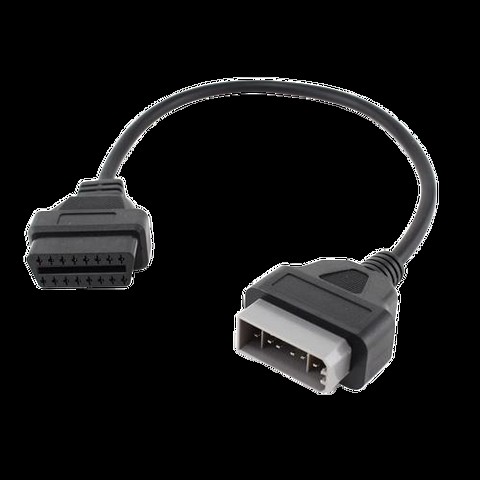Understanding the diagnostic systems in your vehicle is crucial for maintenance and repair. You might be wondering, especially if you own an older car, “Can you use an OBD2 scanner on an OBD1 car?” The short answer is generally no, and here’s why.
To understand this, we first need to differentiate between OBD1 and OBD2. OBD stands for On-Board Diagnostics, and these systems are essentially your car’s way of communicating its health and any potential issues. OBD1 was the earlier version, used in vehicles typically manufactured before the mid-1990s, although some vehicles up to the early 2000s might still use OBD1 protocols. OBD2 is the standardized successor, becoming mandatory in the USA in 1996 and gradually adopted worldwide. Anything newer than around 2006 is almost certainly OBD2.
The crucial difference lies in the standardization and the communication protocols. OBD1 was not standardized, meaning each car manufacturer could have their own diagnostic connector, pinout, and communication protocol. This made diagnosing issues complex and required specialized tools for each brand, sometimes even for different models within the same brand.
OBD2, however, brought standardization. It mandated a universal 16-pin diagnostic connector, usually located under the dashboard on the driver’s side. More importantly, it standardized the diagnostic trouble codes (DTCs) and the communication protocols. This standardization is what allows generic OBD2 scanners to work across a wide range of vehicles.
So, why can’t you simply use an OBD2 scanner on an OBD1 car? The fundamental reason is incompatibility in communication protocols and connector types. An OBD2 scanner is designed to communicate using the standardized protocols of OBD2. OBD1 systems use a variety of proprietary protocols that an OBD2 scanner simply isn’t programmed to understand.
Even if your OBD1 car happens to have a 16-pin connector that physically resembles an OBD2 port, this doesn’t mean it’s OBD2 compliant. Some manufacturers adopted the 16-pin connector earlier but still used their OBD1 protocols. Plugging an OBD2 scanner into such a port will likely result in a communication error, or the scanner simply won’t power on or recognize the vehicle’s system.
What about adapters? You might find adapter cables that convert from an OBD1 connector to an OBD2 connector shape. While these adapters physically allow you to plug an OBD2 scanner into an OBD1 port, they do not magically translate the communication protocols. An adapter only changes the physical connector shape; it does not bridge the gap between the fundamentally different communication languages of OBD1 and OBD2. Therefore, using an adapter will not enable an OBD2 scanner to read data from an OBD1 car.
To diagnose an OBD1 car, you need a scan tool specifically designed to be compatible with OBD1 protocols. These tools are programmed to understand the various manufacturer-specific protocols used in OBD1 systems. Many professional-grade scan tools are backwards compatible and can read both OBD1 and OBD2 vehicles. However, basic, inexpensive OBD2 scanners will not work on OBD1 cars, even with an adapter.
Identifying an OBD1 port can sometimes be tricky. While OBD2 ports are standardized in shape and location, OBD1 ports are much more varied. They can be found under the dash, in the engine bay, or even in the center console. The shape and number of pins also vary significantly depending on the manufacturer and model year.
For instance, older Nissan vehicles often use a 14-pin OBD1 connector.
These ports are frequently located behind the fuse panel cover.
Similarly, older Toyota vehicles with OBD1 systems might use a 22-pin connector, often found in the engine bay.
To connect a scanner, you would need a specific adapter like this Toyota 22-pin OBD1 adapter.
In contrast, a standard OBD2 port is easily recognizable by its 16-pin, trapezoidal shape.
While OBD2 scanners plug directly into this port, remember that if your car is from the pre-2006 era, always double-check its OBD protocol to ensure true OBD2 compliance.
In conclusion, while it might be tempting to try and use a readily available OBD2 scanner on an older OBD1 vehicle, it simply won’t work. The communication protocols are different, and adapters won’t bridge this gap. For diagnosing OBD1 cars, you need a scan tool specifically designed for OBD1 or a professional-grade scanner with OBD1 compatibility. Always verify your vehicle’s OBD protocol before attempting any diagnostic procedures to avoid frustration and ensure you’re using the correct tools for the job.
